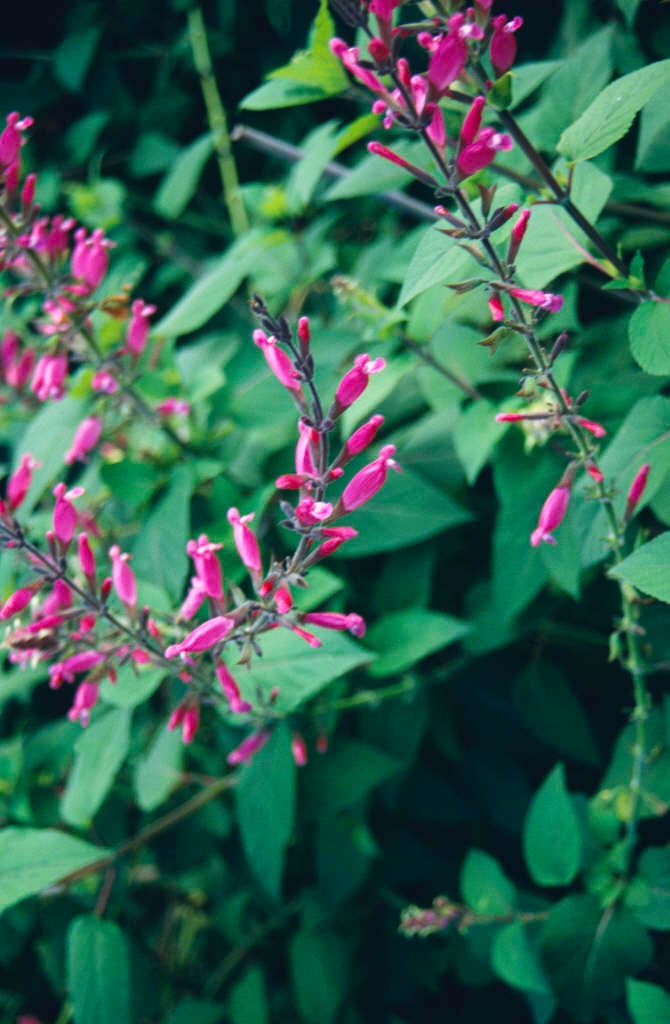Salvia involucrata

rosy-leaf sage
A tall, woody-based perennial to 1.5m in height, with heart-shaped, long-stalked leaves to 10cm in length. Flowers 5cm in length, tubular, two-lipped, purplish-pink, with conspicuous pink bracts which soon fall
Size
Ultimate height
1–1.5 metresTime to ultimate height
2–5 yearsUltimate spread
0.5–1 metresGrowing conditions
Moisture
Moist but well–drainedpH
Acid, Alkaline, NeutralColour & scent
| Stem | Flower | Foliage | Fruit | |
| Spring | Green | |||
|---|---|---|---|---|
| Summer | Pink Purple | Green | ||
| Autumn | Pink Purple | Green | ||
| Winter |
Position
- Full sun
Aspect
South–facing or East–facing
Exposure
Sheltered Hardiness
H3Botanical details
- Family
- Lamiaceae
- Native to GB / Ireland
- No
- Foliage
- Deciduous
- Habit
- Bushy
- Genus
Salvia can be annuals, biennials, herbaceous or evergreen perennials, or shrubs. They have paired, simple or pinnately lobed, often aromatic leaves and 2-lipped flowers in whorls, forming simple or branched spikes or racemes
- Name status
Correct
- Plant range
- Mexico
How to grow
Cultivation
Grow in light, moderately fertile, humus-rich, moist but well-drained soil. Best in full sun but can tolerate light partial shade
Propagation
Propagate by basal cuttings or softwood cuttings in spring or early summer or semi-hardwood cuttings in late summer or autumn with bottom heat
Suggested planting locations and garden types
- Coastal
- Cottage and informal garden
- Mediterranean climate plants
- City and courtyard gardens
- Patio and container plants
- Wildlife gardens
- Flower borders and beds
- Wall side borders
- Conservatory and greenhouse
Pruning
Cut back spent flower spikes to prolong flowering
Pests
Generally pest-free
Diseases
May be susceptible to honey fungus (rarely), powdery mildews, verticillium wilt and foot and root rots
Get involved
The Royal Horticultural Society is the UK’s leading gardening charity. We aim to enrich everyone’s life through plants, and make the UK a greener and more beautiful place.

